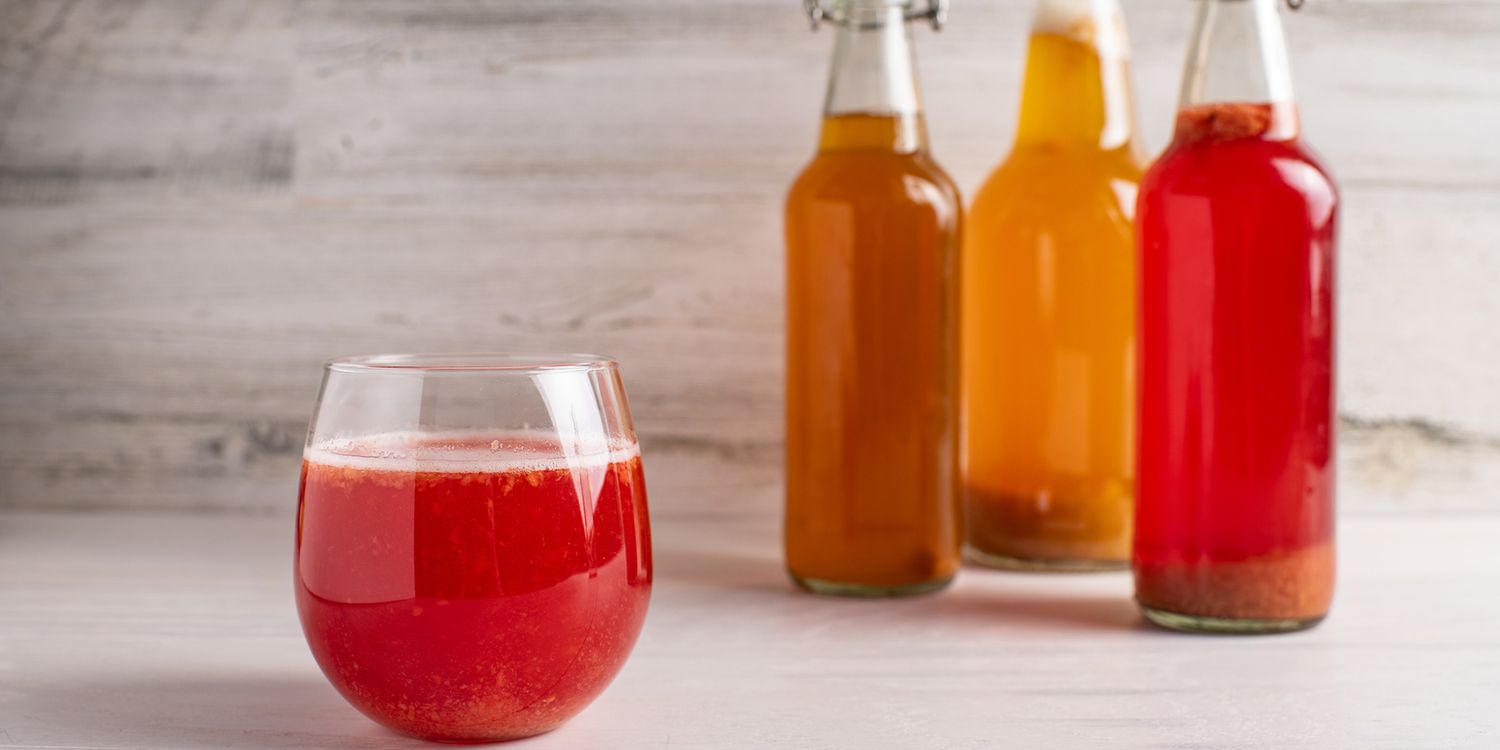I love kombucha, the fizzy, fermented tea drink. It’s flavorful, refreshing, and packed with good-for-my-gut probiotics. Yet when I first started sipping this stomach-settling beverage a few years ago, I was skeeved by something that catches many other kombucha newbies off guard: a strange substance floating towards the bottom of every bottle. To me, it looked like a nausea-inducing combination of spit-up and mold.
Of the sediment: “It looks a little freaky,” says GT Dave, CEO and founder of GT’s Living Kombucha. But rest assured, “it’s totally safe and you can drink it.” In fact, the scary-looking stuff is an indication that your kombucha is produced correctly, says Dave, whose 28-year-old company is by many standards the first and most successful commercial kombucha purveyor in the U.S.
Here, Dave explains the sediment, its purpose, benefits, and what it means if your ‘booch doesn’t have one.
What Is the Sediment and Where Does It Come From?
The sediment in a bottle of kombucha is akin to “the mother” in raw apple cider vinegar, a culture of beneficial bacteria involved in the creation and fermentation of vinegar. In both raw ACV and kombucha, a layer of gunk is an indication that the product is indeed raw and contains live, good-for-you bacteria. In other words, “it’s something that hasn’t been processed, pasteurized, or ‘denatured’ in any way,” says Dave. “Nature and life is still present in it.”
When your ‘booch is first bottled, that sediment is not there, but it forms as the days and weeks go by as a sign that’s it’s still living, says Dave. This post-production growth is part of what makes kombucha so unique. “You can’t think of a lot of drinks that grow—but in a good way—after they’re bottled,” says Dave. “We take that slimy, floaty culture as an opportunity to reference and really acknowledge the specialness of kombucha and how it really is different than other things out there.”
What Does It Taste Like?
A whole lot like…nothing. This lack of flavor catches people off guard, says Dave, because by the looks of it, you might assume the slimy substance has a “sour or earthy note,” he says. But in reality, it’s “more texture than flavor,” which is why when consumed, “it goes down really easily,” says Dave. “It’s remarkably uneventful.”What if I don’t like the texture?
What If I Don’t Like the Texture?
If the sliminess grosses you out, you can simply filter it with a strainer or fish it out with a straw before you start sipping, says Dave. You won’t miss out on any health benefits by doing so. “It’s not required that you consume it,” Dave explains. “It’s not like that is the nucleus of health and wellness of the beverage. It’s more just a visual cue [that the kombucha was properly produced].”
What If My Kombucha Doesn’t Have This Sediment?
Authentic kombucha should contain three things, says Dave: tea, a fermenting agent, and a kombucha culture. When created with these ingredients and under the correct production method, the drink will naturally form a sediment after it’s bottled, and it will also naturally become effervescent.
Don’t see said substance in your ‘booch? That’s a sign it’s been altered through one of two ways. The first: the kombucha was hyper-filtered and stripped of some of its bacteria, probiotics, and organic acids. The end result is a clear, light tasting beverage with no sediment, explains Dave
“It’s fine from a flavor standpoint if you don’t like the vinegary quality,” says Dave, but just know that the distinct taste is what puts kombucha in the same category as other good-for-you fermented foods, like raw apple cider vinegar and sauerkraut.
The second reason your beverage may be sediment-free is that the product is not actually kombucha at all. Instead, it may be a mix of water, juice, and flavor enhancers combined with a fermented vinegar concentrate, probiotics, and artificial carbonation, explains Dave. “We like to say is if it tastes like a light sparkling, flavored water, chances are it is—and it’s not kombucha,” he adds.
Are There Any Types of Residue That Mean My Kombucha Is Unsafe to Drink?
In the commercial space, it’s very, very hard to make a non-safe kombucha, says Dave. Why? ‘Booch naturally has a low pH, which makes it a very highly unlikely candidate for contamination. “Foodborne pathogens can’t exist in kombucha, even if they were almost inserted into the drink,” says Dave.
The one thing that could potentially affect the quality of your fizzy beverage is fresh fruit juice, which is added to many kombuchas—including GT’s—as a flavor enhancer. This fruit juice can expire, and though it’s not dangerous to consume after the fact, it likely wouldn’t taste its best. Check the expiration date on your bottle to ensure you’re sipping it during the peak window.
Related:
- What Is Kefir and Why Is It Good For You?
- What’s the Difference Between Kombucha and Kvass?
- What’s the Difference Between Fermenting and Pickling?




